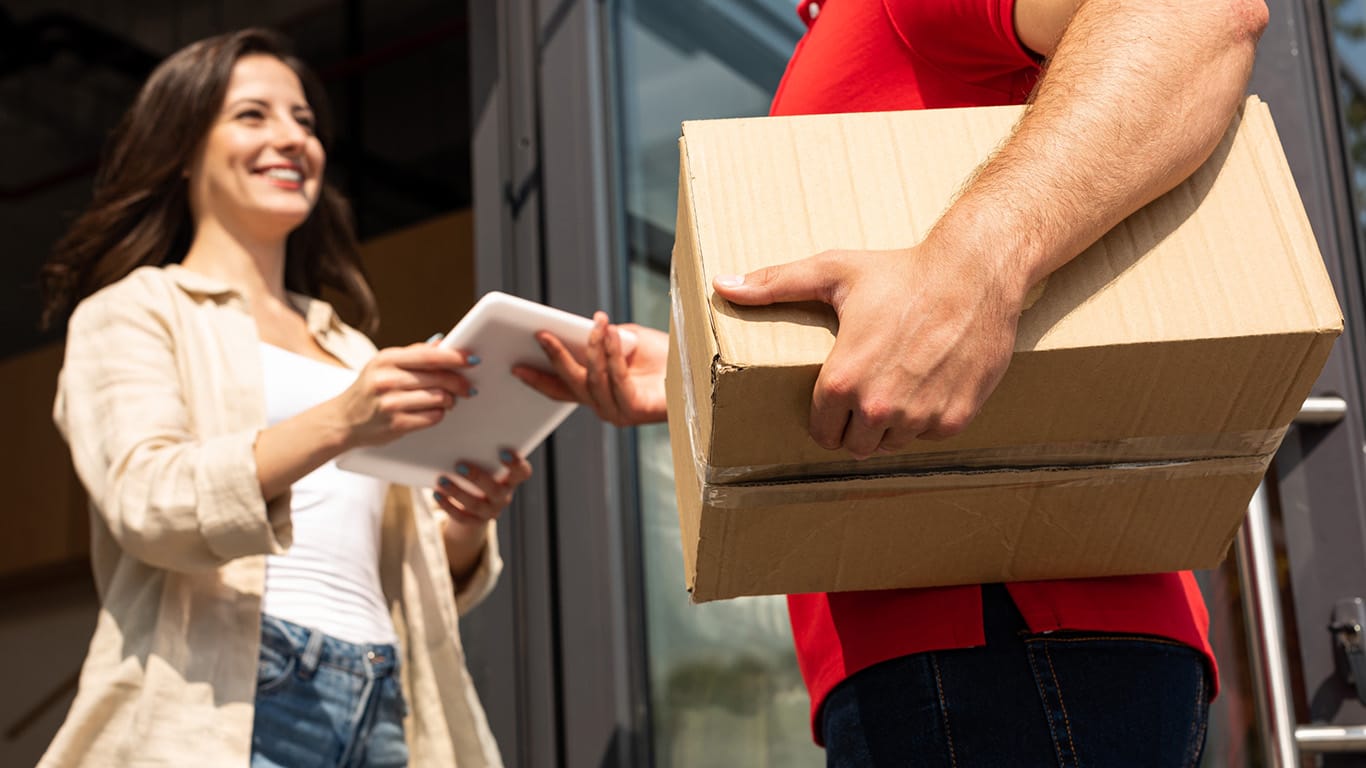Consumers are increasingly demanding faster delivery options. Businesses are exploring micro-fulfillment centers located closer to consumers, optimizing routes using advanced AI and data analytics, and consolidating shipments to cut costs.
Drone delivery and collaborative delivery models like delivery lockers and hubs could offer cost-effective and flexible alternatives to traditional methods. Real-time tracking and communication also boost customer satisfaction and loyalty.
Delivery businesses face an incredibly competitive national market. Inflationary pressures are starting to sting, the labor market is in short supply, and competition from the incredibly low operational costs of last mile industry leaders such as Amazon and FedEx is making it hard for many small businesses to compete.
To keep your business thriving, focus fully on optimizing delivery efficiency. This will allow you to serve a greater number of customers more accurately and quickly than otherwise possible without increasing your operational costs.
Inflationary Pressures
The cost of fuel can significantly impact the bottom line for a delivery business. When prices rise, customers can become price-conscious and choose less expensive delivery options. This can lead to decreased customer loyalty and a loss of market share.
Delivery businesses can combat the effects of rising fuel costs by using innovative technologies like route optimization software, autonomous vehicles, and delivery robots. These technologies will help to streamline operations, reduce operating costs, and increase efficiency.
Sustainable last-mile delivery solutions are also becoming popular, with many consumers seeking out options that minimize the environmental impact of deliveries. This could include a switch to fully electric delivery vehicles or the use of bicycle couriers in urban areas. Other green last-mile delivery options may involve the use of delivery lockers or hubs where packages can be securely stored until customers are available to receive them. This allows companies to avoid the high cost of failed or stolen deliveries.
Labor Shortage
Last mile delivery is a crucial supply chain function for businesses in many industries. From e-commerce and food to retail and wholesale distribution, the final mile connects goods directly to customers. This means that efficient, transparent and cost-effective last mile logistics are essential for these companies to meet customer expectations and build brand loyalty.
Labor costs account for up to 60% of the total cost of fulfillment, and labor shortages are having an impact on the national market. The COVID-19 pandemic has made it more difficult to find workers for warehouses, offices and drivers, driving up delivery costs across the board.
To help offset rising delivery costs, many retailers are exploring new ways to make deliveries faster and more sustainable. For example, they are using data analytics to optimize routes, reduce road traffic and cut fuel costs. They are also experimenting with autonomous vehicles and robots for delivery purposes, which can speed up delivery times and lower operating costs.
Low Operational Costs
Providing delivery services provides new revenue streams, but it’s not without its own set of costs. Whether it’s the upfront startup costs or ongoing operational expenses that must be considered, a business owner should carefully consider the fixed and variable expense models when adding this line item to their budget.
As ecommerce continues to grow in the national market, customers have raised their expectations about timely and cost-effective delivery. This is driving logistics companies to invest in experimental technologies and processes to increase parcel volume, expedite deliveries, and delight customers.
Adding delivery service can be a great way to boost sales and customer satisfaction, but it is important to have the right process in place to ensure efficiency and timeliness. Inefficient planning and execution of delivery routes can lead to inflated labor costs as drivers work overtime and suboptimal freight runs that negatively impact profitability. The key is to develop a thorough, systematic, and organized delivery planning process that can scale as your company grows.
Technology
The rapid rise in eCommerce has created a new expectation of fast and free delivery, straining both retailers and logistics providers. Fortunately, innovative technology can help businesses hone their operational efficiency to cut costs and improve survival rates in an industry that waits for no one.
The challenge of last mile delivery is compounded by limited access to customers in remote and rural areas, traffic congestion, and the lack of visibility when a package is out for delivery. Missed deliveries also increase cost and dissatisfy customers.
To reduce these obstacles, retailers and logistics companies are introducing micro-fulfillment centers and using autonomous vehicles to deliver packages. These innovations can reduce delivery times and costs, while offering flexible fulfillment options like same-day or on-demand service. Another popular option is buy online, pick up in-store (BOPIS), which is a cost-effective way to offer free delivery at the point of purchase. This is a growing trend among brands from ice cream shops to athleisure retailers.




